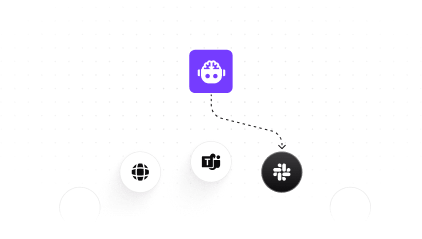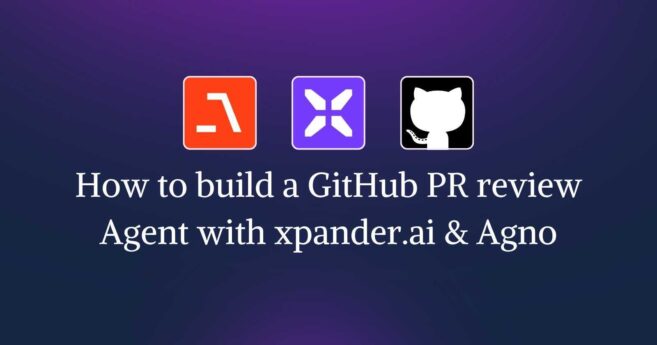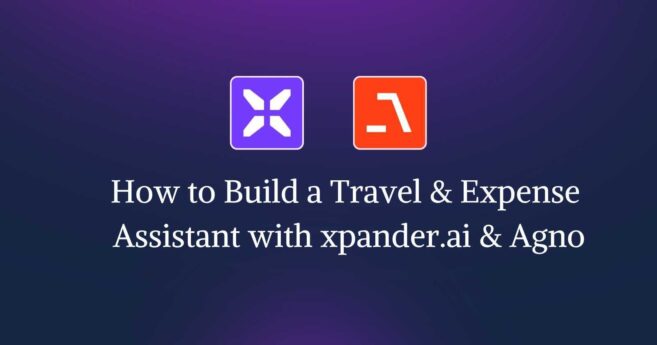When you have a genie in a bottle granting you three wishes, clever thinkers will ask the genie for another genie

Reflecting on 2024 and Envisioning 2025: The Year AI Will Start Building and Managing Other AI Agents
In the age of AI, the definition of a builder has expanded dramatically. Traditionally, builders are developers that write actual code, and no-code enthusiasts that find sufficient motivation to use rigid automation tools. But today, anyone using natural language can become a builder. This shift is driving exponential growth in the number of builders, as well as the amount of new solutions, tools and products being built.
Despite this progress, today’s tools are just scratching the surface of the reasoning power provided by AI Models that can be used to build and run AI Agents. For example – the potential of equipping an AI Agent with a state-of-the-art model, tools, memory and knowledge has the ability to automate anything or create human-like assistants and AI Employees, but the building blocks required to achieve this goal have simply not caught up to the fantastic capabilities of the models, and the gap keeps increasing as models evolve.
On one hand, engineers seeking to create advanced AI Agents face significant limitations in tools and frameworks. They must address challenges like managing context windows, creating tool-calling mechanisms, evaluating AI decisions, and building orchestrating mechanisms such as state machines for multi-agent systems. Each iteration of an AI Agent version requires extensive engineering, much like the process of control system stabilization—carefully balancing complex components to ensure a stable foundation before introducing new capabilities or added complexity
On the other hand, non-developers are drawn to low-code and no-code products that promise them the ability to build AI Agents. In reality, many times these are just glorified workflow automation tools that are trying to augment AI features into an existing, rigid concept. These platforms simplify processes, but provide the complete opposite of what AI Agents are supposed to be.
A true AI Agent can navigate scenarios where its creator didn’t provide explicit instructions on how to resolve an issue and still achieve the defined goals. At its core, an AI Agent should operate within a closed world where it has the full autonomy to determine what is the ideal next step that it should take, and how to achieve each step (for example, making an API call to an external system). Step by step, it should complete ambiguous tasks autonomously.
From our vast experience building AI Agents at xpander.ai with every Model, framework and tool out there, the facts are clear – AI Agents that are required to run a multi-step tasks with more than 4 steps will have extremely low rates of success. The performance will typically degrade even further if more than just a single tool is provided to the model at every step. Generally speaking, equipping a single AI Agent with 10 tools or more will almost surely guarantee that it will not be able to perform according to its requirements. Agentic tooling is the cornerstone of building amazing things with AI Agents. Clearly, these numbers pose a real blocker.
For humanity to make this next technological leap and really leverage the advancements of AI, we need AI Agents that natively integrate with human workers, joining virtual calls with their own avatars, capable of receiving new inputs while preserving their backlog, and autonomously completing tasks while reporting on their progress.
Day 2 Operations for AI Agents: The Emerging Challenge

Day 2 operations—managing AI Agents after deployment—are still in their infancy. Platform teams are prioritizing abstractions to simplify the building process but have yet to fully address the challenges of scaling and maintaining AI Agents in production.
Much like engineering organizations need to keep up with cloud services advancements when running their infrastructure and applications, they now have many more things to worry about. AI Models are being released at a staggering rate – improving performance and decreasing costs. To not upgrade AI Agents to use newer models would be a waste of potential, just like not upgrading to the latest CPU offered by cloud providers every year, which is typically cheaper and faster. But moving between models creates overhead that organizations will still need to create technical and non-technical processes around. For example, testing and optimizing prompts for consistent performance, integrating diverse graph systems for effective workflows, evaluating AI Agent performance over time to ensure reliability, and avoiding regressions as systems evolve. These operational demands are essential to ensure that AI Agents not only meet expectations but also improve continuously.
As multiple agents move into production, these bottlenecks will become critical. Addressing them will require new tools and strategies tailored to the unique demands of AI Agent operations.
Stabilizing an AI Agent with the context of your APIs and data, capable of generating instructions for other AI Agents to follow, is a simple yet transformative idea that every organization should explore.
Building Platforms for the AI Workforce
We believe that in 2025, more teams will invest in building in-house platforms for their organizations, to support the deployment and operations of AI Agents, AI employees, and eventually full-fledged AI Workforces. These platforms will lay the foundations needed for AI Agents to plan, debug, deploy, and release other AI Agents personalized to their organizations.
In terms of organizational transformation, we are most-likely seeing a motion similar to when Platform engineering became prominent between 2019-2021 – when organizations realized they must build an abstraction layer between their software engineering teams and the underlying infrastructure used to run their digital products and other software assets.
Now, enterprises are hungry to achieve the transformative value that AI Agents could bring to their organization, but are at the very early stages of working on AI Agent deployment, governance, operations, and developing the right abstractions and processes.
xpander.ai is building the platform that would help enterprises achieve this goal, at the sweet-spot of meeting the builders’ needs, along with providing the right abstractions that do not limit platform teams, while accelerating their ability to provide an Agentic builders platform to their wider organization.
At a simplified level, a typical organization adoption path for AI Agents could look like this

It would allow any type of builder to build impactful and reliable AI Agents, while still allowing the foundational teams to govern, control and operate AI Agents, that would evolve into AI Employees.







